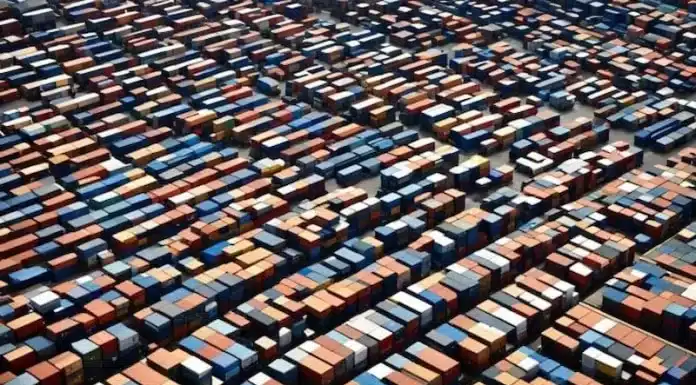Welcome to our article on distribution centers in the Philippines! In this section, we will explore the significant role that distribution centers play in the country’s logistics industry. Whether you are a business owner, a supply chain professional, or simply interested in understanding how products reach their destination efficiently, this article is for you.
Distribution centers, also known as warehouses, are crucial components of the supply chain. They serve as the central hub for receiving, storing, and distributing goods and products. In the Philippines, distribution centers are essential for businesses across various sectors, providing efficient fulfillment services and ensuring the smooth movement of goods within the country.
Table of Contents
What Are Distribution Centers?
A distribution center in the Philippines is a specialized facility that serves as a central hub for receiving, storing, sorting, and dispatching goods. It acts as the bridge between manufacturers or importers and retailers or end customers, ensuring that products are delivered accurately and on time.
These centers are a critical part of the logistics ecosystem in the country, especially given the Philippines’ archipelagic layout. Their role is to support smooth nationwide distribution by consolidating shipments, optimizing inventory, and coordinating with transportation networks. As part of a company’s broader distribution strategy, these centers help reduce stockouts, improve lead times, and maintain customer satisfaction.
In recent years, many Philippine distribution centers have adopted advanced technologies such as warehouse management systems (WMS), barcode scanning, and automated handling tools. These upgrades have helped increase operational efficiency, minimize human error, and improve overall fulfillment performance.
Why Do Companies Use Distribution Centers?
As businesses grow and serve more customers, they often outgrow their initial storage capacity. This can lead to challenges in meeting demand and managing inventory effectively. To support sustainable growth and optimize warehouse operations, companies typically establish distribution centers or work with third-party logistics providers (3PL). A distribution center serves as a centralized hub for storing, organizing, and dispatching goods efficiently. It helps businesses manage large inventories and process orders faster, ultimately improving operational performance and customer service.
Strategically located distribution centers help reduce transportation costs and delivery times by placing inventory closer to key markets. By storing larger quantities of goods, businesses can benefit from bulk purchasing and ensure that products are readily available when needed. This also helps reduce the risk of stockouts and allows for better inventory control. With the right distribution center in place, companies can streamline their logistics, enhance customer satisfaction, and stay competitive in the market.
How Distribution Centers Work?
A distribution center operates in various ways depending on the industry it serves. Some may ship products exclusively to stores, others might focus on direct-to-consumer orders, while some may handle both. Unlike traditional warehouses, which store large quantities of goods without a specific demand focus, distribution centers are driven by real-time customer demand. Products are typically shipped directly from suppliers or manufacturers to these centers, where they are received and stored. When an order comes in, employees pick the items, pack them, and arrange for shipping to fulfill customer requests.
In some cases, distribution centers utilize cross-docking, a method where high-demand goods are directly transferred from incoming shipments to outgoing shipments, bypassing storage altogether to speed up delivery times. Smaller companies may opt to outsource their distribution to third-party logistics providers, while larger businesses are more likely to operate their distribution networks.
These networks often consist of multiple centers strategically located to serve a particular geographic region or a group of stores. Distribution management, which oversees the movement of goods from suppliers to customers, plays a crucial role in the entire process, including inventory management, warehousing, and supply chain coordination.
What are the Benefits and Drawbacks of Using a Distribution Center?
Benefits of Using a Distribution Center:
- Cost Efficiency: Reduces inventory carrying costs by storing goods for shorter periods compared to traditional warehouses.
- Faster Delivery: Strategically located centers enable quicker shipping, cutting delivery time and costs.
- Centralized Order Fulfillment: Speeds up the process by consolidating orders, enabling faster processing of larger orders with many SKUs.
- Improved Customer Satisfaction: Faster shipping and accurate deliveries boost customer satisfaction and loyalty.
Drawbacks of Using a Distribution Center:
- Operational Complexity: Efficient management is essential; small errors can lead to significant disruptions and delays.
- Fulfillment Issues: Miscommunications in picking and packing can result in incorrect or delayed orders.
- Inventory Management Challenges: Disorganized stock and poor layout can slow down operations and hinder worker efficiency.
- External Disruptions: Natural disasters, strikes, or market fluctuations can negatively impact operations and cause delays.
Types of Distribution Centers
Distribution centers in the Philippines come in various types, each designed to serve specific operational goals. Understanding these types can help businesses select the right model based on their distribution strategy and customer demand.
-
Consolidation Centers: These centers gather goods from multiple suppliers and consolidate them into larger shipments for delivery, helping reduce transportation costs and improve delivery efficiency.
-
Break-Bulk Centers: Opposite of consolidation centers, break-bulk centers receive large shipments and divide them into smaller parcels to be distributed to different locations.
-
Cross-Docking Centers: These facilities emphasize speed, with minimal storage. Goods are immediately sorted and transferred to outbound vehicles, reducing inventory holding costs.
-
Fulfillment Centers: Common in e-commerce, these centers handle order processing, packing, and shipping directly to consumers. Speed and accuracy are key in this setup.
-
Return Centers (Reverse Logistics): Dedicated to handling returned goods, these centers focus on inspections, restocking, repairs, or proper disposal of products.
Choosing the right type of distribution center depends on your product type, order volume, customer location, and overall logistics strategy. Aligning the type with your operations can significantly improve service levels and cost control.
Strategic Location Planning for Distribution Centers
Location planning is a crucial factor in the success of distribution centers. Finding the right location can significantly impact the efficiency and effectiveness of your distribution operations. In the Philippines, one location that stands out for its strategic advantages is Metro Manila.
Metro Manila plays a vital role in distribution logistics due to its centralized location and extensive transportation network. As the capital region of the Philippines, Metro Manila serves as the primary hub for distribution center operations, providing convenient access to major ports, airports, and highways. This strategic location enables efficient transportation of goods to different parts of the country, ensuring timely deliveries and streamlined supply chain processes.
The centralization of distribution centers in Metro Manila offers several benefits. First and foremost, it reduces transit times as products can be easily transported from the distribution center to various regions across the country. This not only improves customer satisfaction but also minimizes transportation costs. Additionally, the well-connected transportation network in Metro Manila allows for efficient movement of goods, enabling businesses to meet tight delivery schedules and maintain high service levels.
Moreover, Metro Manila’s proximity to major ports and airports facilitates international trade, making it an ideal location for businesses engaged in import and export activities. Being close to these key transportation hubs reduces lead times for inbound and outbound shipments, ensuring faster turnaround times and improved inventory management.
However, when considering the location of your distribution center in Metro Manila, it is essential to also evaluate factors such as local regulations, labor availability, and real estate costs. These considerations will help you make an informed decision that aligns with your business requirements and objectives.
Overall, strategic location planning is crucial for distribution centers in the Philippines. Metro Manila’s centralized position and robust transportation infrastructure make it an attractive choice for businesses looking to optimize their logistics operations. By strategically locating your distribution center in Metro Manila, you can enjoy the benefits of efficient transportation, reduced transit times, and improved supply chain performance—all enhanced through an effective distribution management system.
Key Components of Effective Distribution Centers
Effective distribution centers in the Philippines require well-designed infrastructure, advanced technology, and skilled manpower. The use of distribution ERP is also key to success. Key components must be in place to ensure smooth and efficient processes within the distribution center.
Infrastructure:
- Adequate storage space: Distribution centers should have sufficient space to accommodate the inventory and facilitate easy access and retrieval of goods.
- Efficient material handling systems: Implementing proper material handling systems, such as conveyor belts or automated storage and retrieval systems, can streamline the movement of goods and reduce labor-intensive processes.
- Proper security measures: Distribution centers should have robust security systems, including surveillance cameras, access control measures, and perimeter fencing, to safeguard the stored inventory and prevent theft or damage.
Optimizing distribution center operations requires leveraging advanced technology:
- Warehouse Management Systems (WMS): Implementing a Warehouse operations tools enables efficient inventory tracking, order processing, and allocation of resources, ensuring accurate and timely order fulfillment.
- Inventory tracking software: Utilizing software solutions for real-time tracking of inventory helps monitor stock levels, prevent stockouts, and optimize order replenishment.
- Automation solutions: Automation technologies like robotics and automated guided vehicles (AGVs) can increase operational efficiency by reducing manual labor, minimizing errors, and improving overall productivity.
In many cases, these technologies are integrated into distribution ERP systems, which centralize and automate various distribution functions—enabling better coordination between warehousing, inventory, and logistics operations.
Management and Staffing:
The success of a distribution center also heavily relies on competent management and skilled staff:
- Management team: The management team should possess expertise in warehouse operations, inventory management, and logistics. They should have a thorough understanding of industry best practices and be capable of making informed strategic decisions.
- Staffing: Adequately trained and skilled staff is crucial for the efficient execution of daily operations. Roles such as warehouse supervisors, forklift operators, pickers, packers, and logistics coordinators play a vital role in ensuring smooth workflow and optimum utilization of resources.
By prioritizing these key components, distribution centers can enhance their operational performance, ensure customer satisfaction, and drive overall business success.
Distribution Center Processes:
- Receiving Goods: Goods are received from suppliers and manufacturers, unloaded at the dock, and scanned for quality and accuracy. Equipment like forklifts and scanners helps speed up the process, ensuring correct items before stored.
- Storage: After inspection, goods are stored using stock management strategies like FIFO or LIFO. Some items may be cross-docked, moved directly to outbound shipments to save time.
- Order Fulfillment: Once an order is placed, items are picked, packed, and shipped. Warehouse management systems (WMS) guide efficient picking methods, such as batch or zone picking.
- Returns Management: Returns are processed in-house, with items checked and restocked or refurbished based on condition.
By optimizing these processes, distribution centers ensure efficient operations and timely delivery, improving customer satisfaction.
Guidelines for Agent and Distributor Relationships in the Philippines
Establishing strong and mutually beneficial relationships with agents and distributors is essential for successful distribution center operations in the Philippines. When collaborating with agents and distributors, businesses need to consider several factors to ensure a productive and long-lasting partnership.
First and foremost, it is crucial to carefully select agents and distributors who align with your business goals and values. Look for partners who have a deep understanding of the local market in the Philippines and have established networks and connections within your industry. Conduct thorough research, consider referrals, and evaluate their track record before making a final decision.
Once you have chosen your partners, it is important to clearly outline the responsibilities, expectations, and obligations of both parties. This can be achieved through a well-drafted contract that includes key elements such as the scope of distribution or agency, pricing and payment terms, territory restrictions, intellectual property rights, and termination clauses. Working with legal professionals familiar with the legal and regulatory framework governing agent and distributor relationships in the Philippines can help ensure that all necessary provisions are included in the contract.
Regular communication and transparency are essential for maintaining strong relationships with agents and distributors. Keep an open line of communication to address any concerns, provide updates on products or promotions, and gather feedback on market trends and customer preferences. Collaborate closely with your partners to develop targeted marketing and sales strategies that cater specifically to the Philippine market.
Building trust and rapport with agents and distributors is also crucial. This can be achieved through fair and transparent business practices, timely payments, and providing ongoing support and training to your partners. Regularly review performance metrics and provide constructive feedback to help your partners improve their operations and achieve mutual business objectives.
Lastly, it is important to stay updated with the legal and regulatory requirements related to agent and distributor relationships in the Philippines. Familiarize yourself with relevant laws and regulations governing contract enforcement, intellectual property rights, competition, and consumer protection. Compliance with these laws will not only help you avoid legal disputes but also strengthen your reputation as a reliable and ethical business partner.
Challenges Facing Distribution Centers in the Philippines
Distribution centers in the Philippines encounter a range of challenges that significantly impact their operations. Logistical hurdles pose some of the most pressing issues for these centers. With the growing demand for efficient logistics services, congestion, transportation limitations, and inventory management complexities can hinder the smooth flow of goods. Overcoming these challenges requires innovative solutions and a proactive approach to ensure effective distribution center operations in the Philippines.
Environmental issues also pose considerable obstacles for distribution centers in the country. As sustainability becomes an increasingly vital aspect of business practices, distribution centers need to address environmental concerns. Implementing sustainability initiatives, such as optimizing energy consumption, reducing waste, and adopting eco-friendly packaging solutions, can help these centers minimize their environmental impact and contribute to a greener supply chain.
Another significant challenge for distribution centers in the Philippines revolves around regulatory issues. Compliance with customs regulations, labor laws, and safety standards is crucial to ensure legal and ethical operations. Navigating these regulatory frameworks can be complex, but it is essential for distribution centers to maintain integrity and avoid any legal repercussions. By staying abreast of regulatory updates and investing in robust compliance measures, distribution centers can streamline their operations and build trust with customers and partners.
In conclusion, distribution centers in the Philippines face a variety of challenges, ranging from logistical hurdles to environmental and regulatory concerns. However, by addressing these challenges head-on and implementing innovative solutions, distribution centers can overcome these obstacles and strive for efficiency and sustainability. As the logistics industry continues to evolve, it is crucial for distribution centers to adapt to changing landscapes and maintain their role as key players in the supply chain.
If you’re managing a distribution center in the Philippines and looking to streamline your operations, HashMicro’s Distribution Management Software could be a game-changer. It offers real-time inventory tracking, automated shipping processes, and seamless system integration, enhancing the efficiency of your distribution activities.
Interested in optimizing your workflow and reducing operational hiccups? Click the banner below to learn more about how this software can elevate your distribution center’s capabilities.























